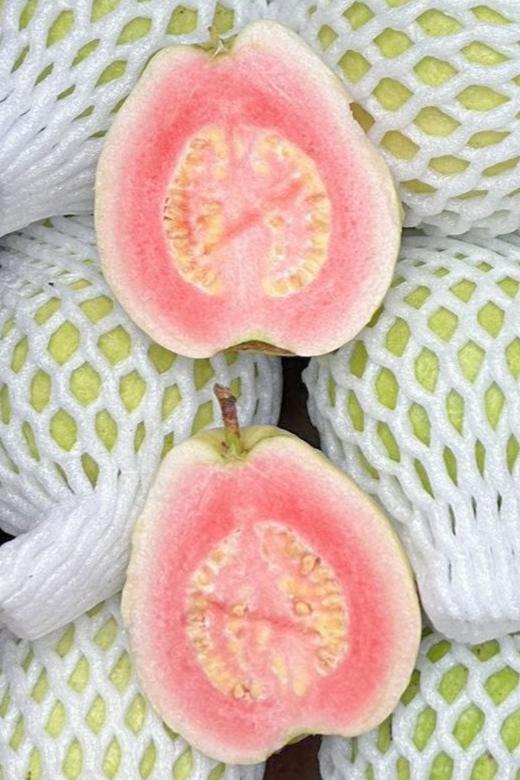My Store
Watermelon Guava Tree 1 gal Air-Layered (Fruiting)
Watermelon Guava Tree 1 gal Air-Layered (Fruiting)
Couldn't load pickup availability
Note: Our trees are air-layered at our guava farm and can begin fruiting in the first year. With proper care, you can enjoy these delicious tropical fruits in your own backyard.
Planting Instructions for Guava Trees
Guava trees are tropical plants that thrive in warm climates. Here's a guide to planting and caring for them:
Climate and Location
Warm climate: Guava trees prefer warm, frost-free climates with temperatures between 70-80°F (21-27°C).
USDA Zone: Guava trees grow best in zones 9-11.
Full sun: Plant in a location that receives at least 6-8 hours of direct sunlight per day.
Well-draining soil: Guava trees require soil with good drainage to prevent root rot.
Planting Process
1. Dig a hole: The hole should be twice as wide and deep as the root ball of the guava tree.
2. Amend the soil: Mix organic matter, such as compost or well-rotted manure, into the soil.
3. Place the tree: Carefully place the tree in the hole, ensuring the graft union is above the soil line.
4. Fill in the hole: Fill in the hole with the amended soil, firming it gently around the roots.
5. Water thoroughly: Water the newly planted tree deeply to settle the soil.
Care and Maintenance
Watering: Water regularly, especially during dry periods. However, avoid overwatering, as it can lead to root rot.
Fertilizing: Fertilize the tree annually with a balanced fertilizer during the growing season.
Pollenating: Guava trees are self-pollinating, so it can bear fruit with one plant.
Pruning: Prune the tree to maintain its shape and size. Remove any dead or diseased branches.
Pest and disease control: Monitor the tree for pests and diseases, and take appropriate action if necessary.
Harvesting
Ripeness: Guavas are ripe when they are soft to the touch and have a sweet aroma.
Harvesting: Guava trees can produce multiple harvests per year, depending on climate. Carefully pick the fruit by hand, avoiding bruising.
Share





